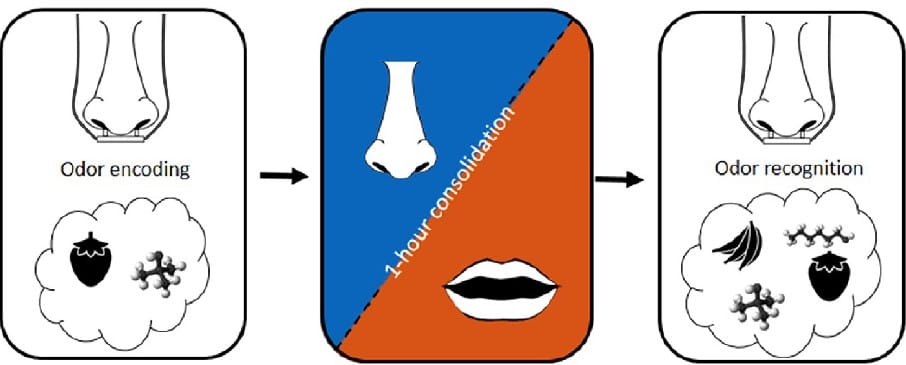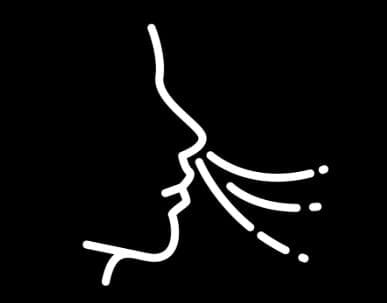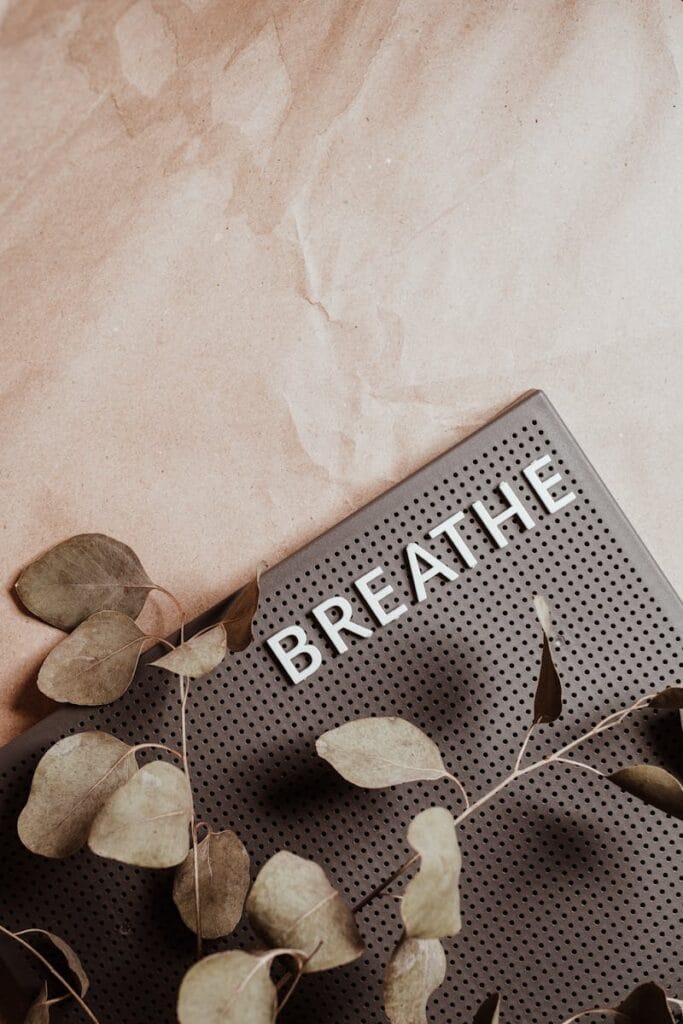Your breathing pattern influences your brain activity
For example, your hippocampus neural activity patterns are synchronized with your respiration. Not only does your breathing influence oxygen going to cell tissue, when you breathe through your nose, you create an air pressure stimulation across the olfactory bulb of your nose. Your olfactory bulb sends signals directly to your amygdala and hippocampus, part of your limbic system, one of the oldest structures in your brain. Your hippocampus manages cognitive functions like memory consolidation and information processing. When you bypass nasal airflow by mouth-breathing, the breathing and hippocampus rhythm or the olfactory bulb connection is lost. Mouth breathing impacts information intake as well as recognition processes thereby reducing memory performance. Wanting to explore the nasal breathing and memory processing connection further, A 2018 paper in the Journal of Neuroscience, Respiration Modulates Olfactory Memory Consolidation in Humans, looked at the impact of mouth vs. nose breathing on memory consolidation.
Breathing impacts memory consolidation of information
For the study, participants breathed through the nose during encoding (gathering information) and recognition (testing their memory), but during the hour between gathering information and recognition, they either breathed through their nose OR breathed through their mouth. Folks who breathed through their nose during that one-hour time gap did better on the memory recognition. Breathing through the nose during memory consolidation significantly improved memory recognition performance compared to mouth breathing. Below is Figure 1 of the experimental paradigm from the 2018 paper, Respiration Modulates Olfactory Memory Consolidation in Humans.

Nasal breathing significantly improved memory performance
I find this so interesting. It’s another example of how our bodies were designed and evolved to breathe through the nose. Our body functions best when we breathe through our nose. We can intake, process, and retain information better when we breathe through our nose. Yet another reason to love your nose.

More research on breathing influence on brain activity and function.
For those who want to read more, there are many articles that have come out in the last 10 years highlighting respiration’s connection with different brain wave patterns and functions. The 2017 article, Breathing as a Fundamental Rhythm of Brain Function, summarizes some of the research around neocortex and cortical activity connections (the outer layers of the brain responsible for cognition), many also relating to the olfactory bulb stimulation.
“Respiration creates both conscious and unconscious streams of rhythmic sensory inputs to the brain. Consciously accessible sensations of normal, unobstructed breathing include odor perception, the mechanical and thermal sensation of air flowing through nose, mouth and upper airways, and the proprioception of movements of the chest and abdomen. Unconscious sensory signals caused by respiration include interoceptive signals from the lungs, diaphragm and internal organs, which represent the mechanical consequences of respiratory movements, and the chemosensitive signals from the cardiovascular system, which represent breath-by-breath fluctuations of CO2 and O2 levels in the blood”. (excerpt from the article, Breathing as a Fundamental Rhythm of Brain Function)
“While there are many sources of respiration-locked activity, the olfactory system deserves special attention, because early mammals relied strongly on their olfactory sense and had proportionately large olfactory bulbs.” (excerpt from the article, Breathing as a Fundamental Rhythm of Brain Function)
The 2022 article, Recent insights into respiratory modulation of brain activity offer new perspectives on cognition and emotion shares additional background and explanations. Your breath is truly connected to everything in your body. Your breathing is much more than air coming in and out, it’s a pressure wave that ripples thorough your body, out to the tips of your toes and to the crown of your head.

